|
|
|
|
NERO  Rocket motors Rocket motors  HY-4000 rocket motor HY-4000 rocket motor |
 |
HY-4000 Rocket Motor |
|
|
|
| The HY-4000 rocket motor was especially designed for the E-36
rocket. Trajectory calculations showed that a rocket motor with a total impulse of about 4000 Ns (i.e.
"L"-range) would be necessary to launch the rocket to the planned 3 km. |
|
|
|
|
he HY-4000 uses laughing gas (N2O, nitrous oxide) as oxidizer and hydroxyl
terminated polybutadiene (HTPB) as fuel. A launch acceleration of about 7-10 g is desirable for a stable flight, so the
motor has to deliver a thrust of 1100-1400 N at ignition. With a total impulse of 4000 Ns, this means a burning time of
3 seconds. As the regression rates of hybrid fuels are low, a multi ported grain with six ports was designed and built. |
|
|
  |
Read all about the E-34, the rocket that has flown with this hybrid motor. |
|
|
|
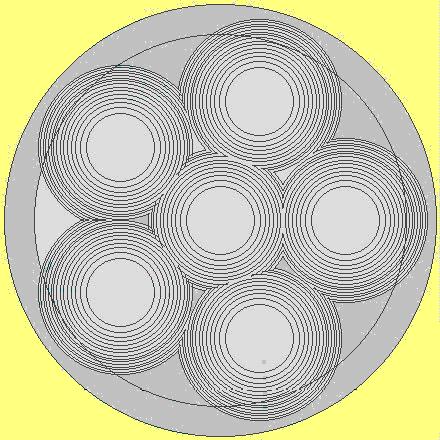 |
|
Computer simulation of the regression of the multiported grain. |
|
|
|
The fuel grain is vacuum casted in a phenolic paper liner, shown in the above figure as
the tube around the propellant. The liner is not completely filled during casting to create a post combustion chamber.
The combustion temperatures of nitrous oxide based rocket propellants are high, so the
stainless steel nozzle is fitted with a graphite insert. This insert has to be replaced after two or three tests.
As the liquid nitrous oxide is injected during flight, the HY-4000 is tested in
a vertical test bench. The small test bench used for the E-39 rocket was modified for this purpose. |
|
|
|
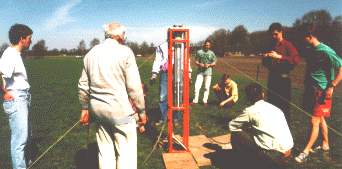 |
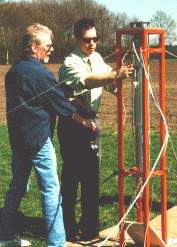 |
Preparations for the first static test of the
HY-4000 hybrid rocket motor on the vertical
test bench |
Filling of the HY-4000 motor |
|
|
|
|
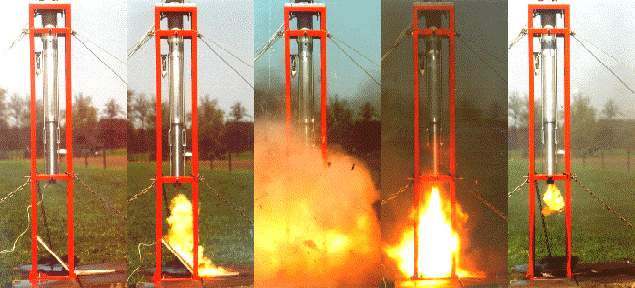
| Before ignition |
Ignition |
Breaking of the ceramic blast deflector |
Full thrust |
Tail-off |
|
|
|
|
During the first static test the power of the motor was underestimated, and the blast
deflector broke app. 0.5 seconds after ignition. First static test of the HY-4000 motor. Static tests are very
impressive with a large bright yellow flame, and buzzing sound. To prevent heat feedback from the exhaust gases to the
N2O tank (vapor pressure of N2O is very sensitive to temperature !), an extra section was mounted below the test bench.
Furthermore the ceramic blast deflector was replaced by a 6 mm thick steel plate. In the picture below the static
testing of the HY-4000 rocket motor with modified test bench. |
|
|
|
 |
|
|
|
|
Motor before
ignition
| Motor at full thrust (5x) |
Tail-off (2x) |
|
|
This modified test bench worked as expected. Concrete tiles which were placed at the
bottom of the test bench to protect the grass were blown away by the exhaust gases !! |
|
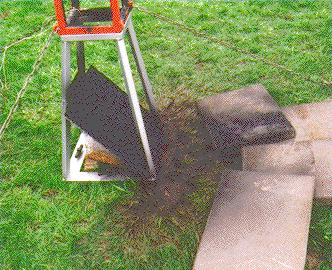
Concrete tiles moved by the exhaust gases !!. |
|
|
 |
|





